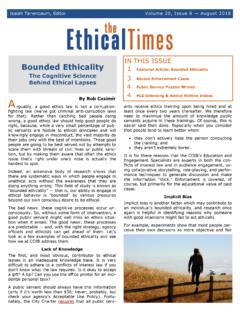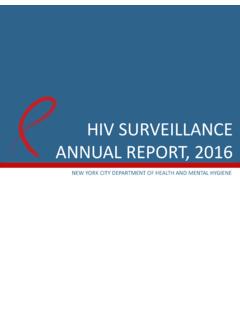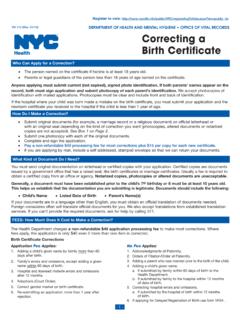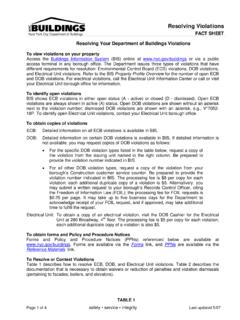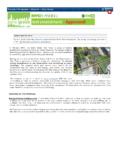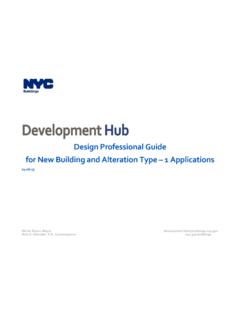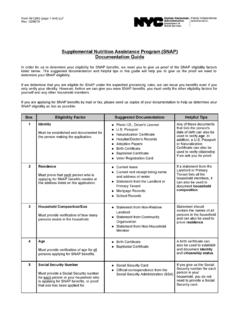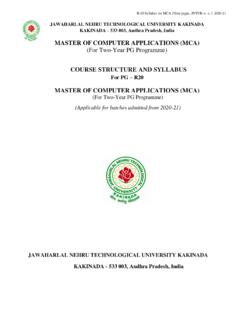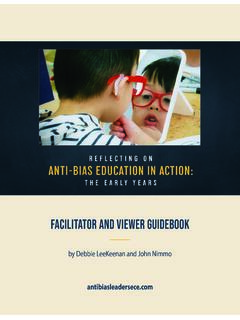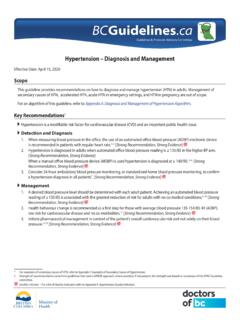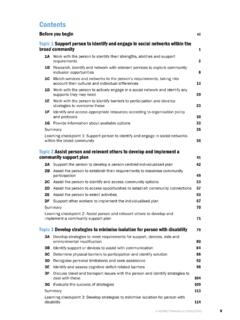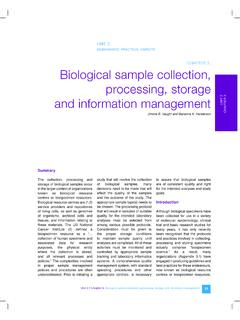Transcription of Mother’s Guide to Breastfeeding: Prenatal Curriculum
1 Mother s Guide to Breastfeeding: Prenatal CurriculumThe New York Citybreastfeeding curriculum_v7_Layout 1 10/5/12 9:52 AM Page 1 How to use this curriculumA key public health goal of the New York City Health Department is to makebreastfeeding the norm, which includes encouraging and supportingexclusive breastfeeding up to six months of age as recommended by theAmerican Academy of Pediatrics. This Curriculum was developed for use in theprenatal setting. It is intended to support a mother s choice to breastfeed and to help her establish and achieve her breastfeeding goals. The Curriculum may be implemented by a nurse, clinician, lactation specialistor other educator ideally with unified messages from all.
2 It is largelydesigned for one-on-one teaching through brief discussions as part ofprenatal visits, with the content building sequentially over three trimesters. A mother and teacher may choose to move around within the curriculumdepending on personal needs and insights, and teachers in some settings maychoose to use the Curriculum for small group sessions. The Curriculum is arranged in a book format, with content for the teacher in pages on the left, and content for the mother in pages on the right. The teacher s pages include key messages, teaching points and questions that should be anticipated, and indicates when related handouts can bedistributed. The mother s pages should be used as the educational andconversational Guide to each session.
3 Partners and other support peopleshould be included in the sessions whenever possible. The technique ofmotivational interviewing is included as a suggested teaching approach (see Resourcesfor more information). Teachers are encouraged to consider how best to implement this curriculumin their own settings, for example, by distributing handouts in other languagesand providing local resource listings. We welcome your questions and/or feedback; please contact the Bureau ofMaternal, Infant and Reproductive Health via email at curriculum_v7_Layout 1 9/28/12 12:03 PM Page 2 ContentsFirst Trimester: Starting the conversation.. 4 Can I breastfeed?.. 4 Why breastfeed? .. 8 Setting breastfeeding goals.. 12 Support from others during breastfeeding .
4 16 Second Trimester: How breastfeeding works.. 18 How your body makes milk.. 18 What is in your milk?.. 20 Latching on.. 22 Popular breastfeeding positions.. 26 Caring for your breasts.. 30 Third Trimester: Getting ready to breastfeed.. 32 What you need to know about breastfeeding .. 32 Feeding cues.. 36 breastfeeding goal, confidence, and support revisited .. 40 Overcoming challenges.. 42 breastfeeding in public.. 46 Returning to work or school.. 48 Other questions.. 50 Resources.. 52breastfeeding curriculum_v7_Layout 1 9/28/12 12:03 PM Page 3 Can I breastfeed?Teacher4 First TrimesterKey messages Nearly all women can breastfeed. There are very few medical reasons notto breastfeed. As your health care team, we want to support you in breastfeeding and we want to makebreastfeeding the norm in points Review conditions/behaviors on page 5 and elicit concerns.
5 Clarify difference between true contraindications and perceived reasons why women can t breastfeed. Refer women at risk for breastfeeding problems to IBCLC (very asymmetrical breasts, history of breast surgery).Anticipate questionsCan I breastfeed I don t feel well? Colds, flu and other infections: breastfeeding permitted. The breast milk providesantibodies to baby to protect against infection. Handwashing can be reinforced. If mother is hospitalized, pumping milk is an option. I take medications? Most prescribed and over-the-counter medications are safe to take whenbreastfeeding. However, there are some medications (including some birth controlpills and herbal remedies) that should not be used by breastfeeding mothers.
6 Mothers should check with their physician or other clinician about any medications. LactMED , a National Institutes of Health database of drugs to which breastfeedingwomen may be exposed, is a good source of information about medications andpossible risks to the nursing dbreastfeeding curriculum_v7_Layout 1 9/28/12 12:03 PM Page 4 Can I breastfeed?Mother5 First TrimesterMothers can breastfeed if Have a cesarean section. Take medications for illnesses; manyare permitted, but always check with a provider. Have had certain breast surgeries, often with support from a breastfeeding counselor. Have hepatitis A or B, once baby is given protective shots in the hospital. Have hepatitis C, unless nipples are cracked or bleeding.
7 Have pierced nipples. Have inverted nipples, as the nipple may pop out during pregnancy. Have an occasionalalcoholic drink with spacing between drink and next feeding. Smoke tobacco; it is best for mother s and baby s health for mother not to smoke, but it is not a reason to avoid breastfeeding . Mothers cannot breastfeed if Have HIV. Have other HTLV diseases. Use illegal drugs. Are receiving cancer chemotherapy, radioactive isotopes or thyrotoxic agents. Have active shingles or chicken pox on the breast (herpes viruses). Have untreated chicken pox or untreated active curriculum_v7_Layout 1 9/28/12 12:03 PM Page 5 Can I breastfeed?cont dTeacher6 First TrimesterCan I breastfeed I smoke tobacco?
8 It is still better to breastfeed than formula-feed breast milk provides better nutritionand protection against infection. Counsel mothers about the dangers of secondhand smoke: can increase the risk ofsudden infant death syndrome (SIDS) and asthma episodes. Refer mothers to smoking cessation programs via 311. I drink alcohol? Alcohol can pass into breast milk, and it also can make mothers drowsy and less alertwhen taking care of the baby. For some women, an occasional, single drink is okay. Drink should be takenjust afternursingrather than just before, with the expectation that the alcohol will no longer bein the breast milk by the next feeding. I use illegal drugs? Illegal drugs such as crack, cocaine, marijuana, heroin and ecstasy can harm bothmother and baby.
9 They can pass through breast milk, so do not use any illegal drugs if you are nursing. In rare circumstances, mothers on methadone may breastfeed, but there needs to be excellent coordination and follow-up between the mother s obstetrician and the methadone program. Protocols are available through the Academy ofBreastfeeding Medicine. breastfeeding curriculum_v7_Layout 1 9/28/12 12:04 PM Page 67breastfeeding curriculum_v7_Layout 1 9/28/12 11:58 AM Page 7 Why breastfeed?Teacher8 First TrimesterKey messages breastfeeding is a gift that only you can give to your baby. Breast milk is superior to formula. Breast milk and breastfeeding provides many health benefits for mothers and babies. Mothers and babies benefit the most when breast milk is the only food or liquid given to babies for the first six months (exclusive breastfeeding ).
10 Teaching points Use and define the term exclusive breastfeeding ; explain the expert recommendations. Review the reasons why breastfeeding is best for babies and mothers. Ask: What do you think about the advice from health experts? Explore breastfeeding history and pertinent medical history (asthma, eczema, diabetes, obesity). Tailor communication to specific medical history of patient. Considering your medicalhistory of _____, breastfeeding may be particularly beneficial in reducing yourchild s risk for _____. This is an opportunity for discussion and referral if issues are identified. Ask: Which of the benefits on the list is most meaningful to you? Discuss the flip side of the benefits: What are the risks of not breastfeeding ?
